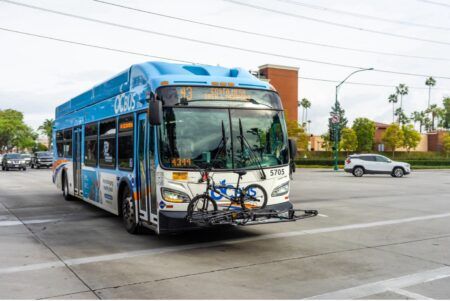Self-driving shuttle buses have started sharing the road with pedestrians, cyclists and other vehicles in a busy business district of Sweden’s capital city, as part of an autonomous driving project that is a joint initiative between Ericsson and several local partners.
Traveling at speeds up to 15mph (24km/h), the two self-driving shuttle buses are operating on roads in central Stockholm to demonstrate their potential for multimodal urban transport in future smart cities.
The purpose of the current trials is to test the driverless buses over a long period of time on public roads under real-world traffic conditions, with the program also testing their ability to operate in varying weather conditions, as well as remote take-over and human response.
Ericsson’s partners on the project include the City of Stockholm, Nobina, SJ (Swedish Railways), Klövern, KTH Royal Institute of Technology, and Urban ICT Arena.
The shuttle buses are one part of the Drive Sweden strategic innovation program that was launched in 2015 by the Swedish government and gathers partners from all sectors of society to address the challenges and opportunities of road safety, adaptation of infrastructure, and transport-related legislation.
Ericsson is providing its Connected Urban Transport (CUT) software platform for the Stockholm project, which includes the real-time monitoring of the self-driving buses, and will facilitate the testing of the buses’ connectivity to a 5G cellular network that is planned for the second half of the six-month trial.
Ericsson’s CUT platform serves as the virtual bus driver for the shuttles in Stockholm, communicating with smart, sensor-enabled bus stops, traffic lights and roadside infrastructure.
Powered by Ericsson’s IoT (Internet of Things) Accelerator, the Connected Urban Transport platform supports nearly-instantaneous onboarding of thousands of connected traffic lights, warning signals and roadside infrastructure, such as bus stops. With one central operational system, the aggregated data generated by these connected resources can be safely and securely shared across all the transport agencies within a city, and across multiple municipalities.
CUT’s open API allows the public sector to securely collaborate with developers and service providers, along with automakers and transport operators, to build smarter, more attractive and more profitable cities.
An off-the-shelf system, the Connected Urban Transport platform provides the foundation for intelligent traffic management in: individual cities, such as its deployment in Gothenburg, Sweden; multi-city regional cooperatives, as demonstrated across 13 counties in Texas that form the Dallas-Fort Worth metroplex; and even entire countries, as seen in its use in the Netherlands’s nationwide Talking Traffic project.




